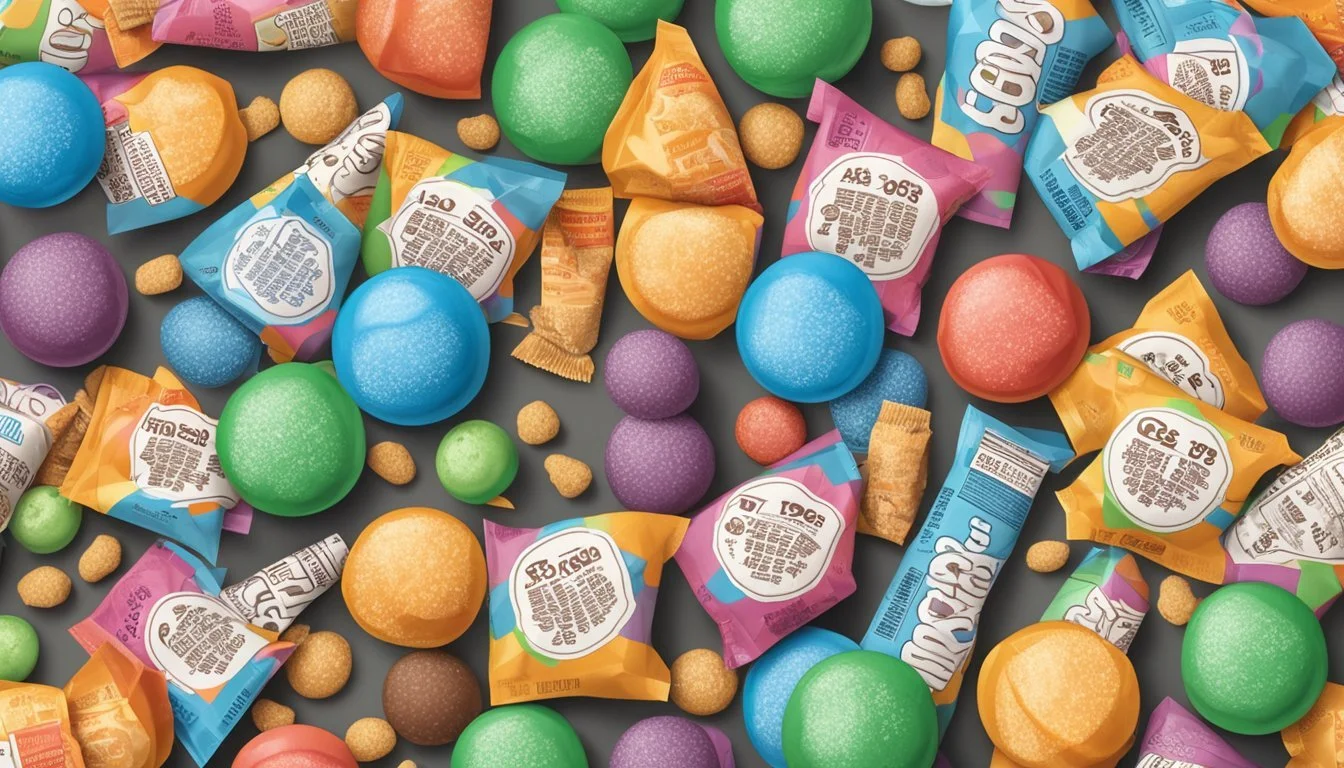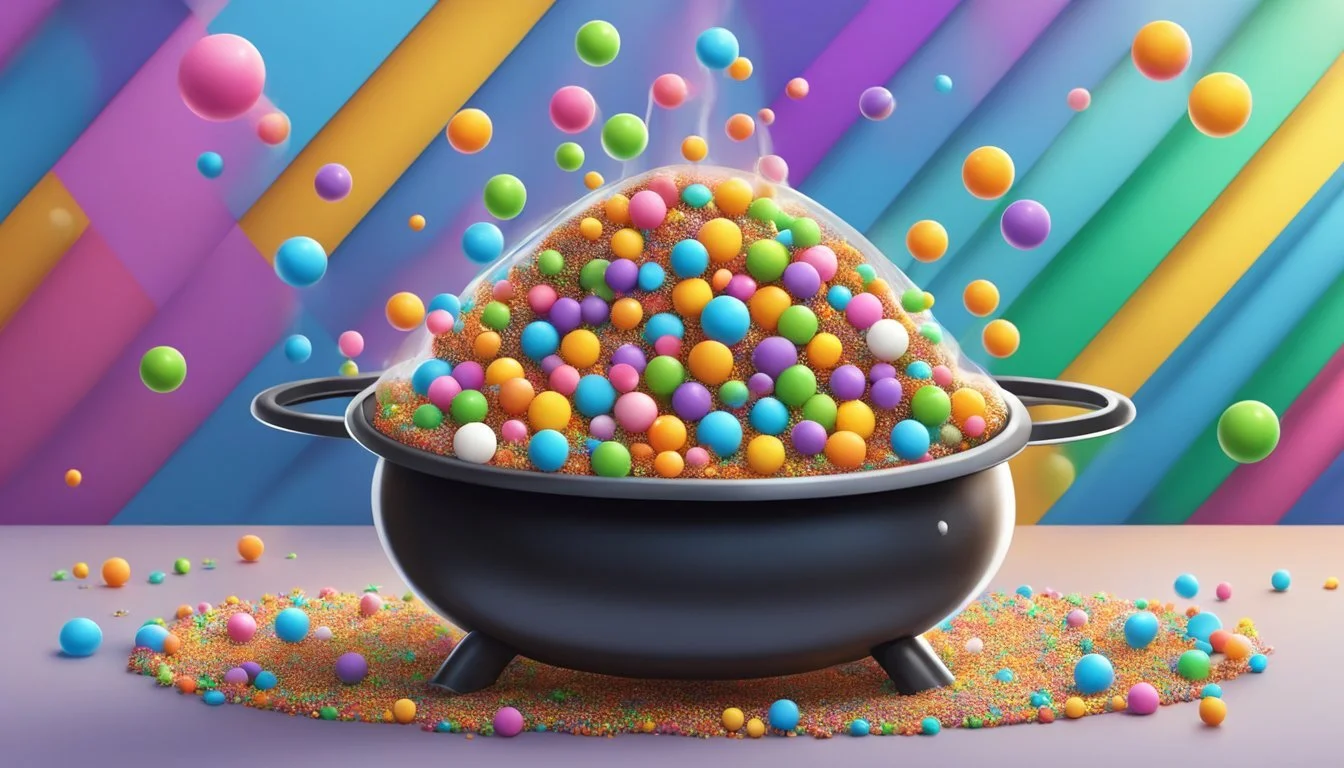Are Tootsie Pops Vegan?
Unveiling the Candy's Ingredients
Tootsie Pops have been a popular treat for many years, loved by children and adults alike for their unique combination of a chewy Tootsie Roll center enclosed in a hard candy shell. As people become more conscious of their dietary choices, the question of whether Tootsie Pops are vegan has become more prevalent.
Veganism excludes all forms of animal exploitation and cruelty, which extends to not consuming any animal-derived products. Tootsie Pops, upon inspection of their ingredient list, are found to contain several animal ingredients, predominantly milk-based, which renders them unsuitable for a vegan diet. It should be noted that while Tootsie Pops are not vegan-friendly, they are considered vegetarian.
For those seeking plant-based alternatives to satisfy their sweet tooth, options do exist in the market that mimic the experience of enjoying a Tootsie Pop without the inclusion of animal products. These alternatives provide a similar texture and flavor profile, appealing to vegans who might miss the nostalgic candy.
Ingredients Overview
When examining whether Tootsie Pops are vegan, it is critical to dissect their ingredients, paying close attention to core components, flavors, colors, and any animal-derived substances.
Core Ingredients
Tootsie Pops primarily consist of sugar and corn syrup, which serve as the base sweeteners for the candy. Additionally, palm oil is used in their formulation. The original Tootsie Pop version features these ingredients prominently.
Flavors and Colors
The brand offers a variety of flavors, such as chocolate, strawberry, cherry, grape, orange, watermelon, green apple, and blue raspberry. The specific taste is achieved through a blend of natural and artificial flavors. For coloring, they utilize a mix of artificial colors, which are synthetic dyes, and may also include natural colorants like carmine, which is derived from insects and not vegan.
Animal-Derived Ingredients
In terms of animal-derived components, Tootsie Pops contain milk proteins including condensed skim milk, whey, lactose, and other milk derivatives, making them non-vegan. The presence of these dairy products is due to the inner Tootsie Roll center, which is crafted to provide a creamy contrast to the hard candy shell.
Tootsie Pops and the Vegan Diet
When assessing whether Tootsie Pops align with a vegan diet, it is integral to identify the presence of animal-derived ingredients and consider available vegan-friendly alternatives.
Defining Vegan-Friendly Candy
Vegan-friendly candies are those that do not contain any animal-derived ingredients and are produced without animal testing or cruelty. These sweets are suitable for individuals following a vegan diet, which excludes meat, dairy, and all other animal products. Cruelty-free standards are also relevant, as they ensure no animals were harmed during the product's development.
Common Non-Vegan Ingredients in Candy
Candies, including Tootsie Pops, often contain non-vegan ingredients that are sourced from animals:
Dairy-based products: Milk-based ingredients such as condensed milk contribute to the creamy texture in many candies. Tootsie Pops incorporate milk-based components, making them non-vegan.
Gelatin: Derived from animal collagen, gelatin is used for gelling candies. While not present in Tootsie Pops, it is a common non-vegan ingredient.
Beeswax: Used as a glazing agent, beeswax is produced by bees.
Carmine: Sourced from insects, carmine is a red dye found in some colored confections.
Bone Char: Often used in sugar refining, bone char can make otherwise vegan candy non-vegan, depending on the source of the sugar.
Tootsie Pops do not classify as vegan-friendly due to their use of milk-based additives such as condensed milk. Additionally, the artificial flavors and colors may be off-putting for those strictly adhering to vegan principles. For those seeking dairy-free and vegan alternatives, there are candies like Blow Pops which are devoid of such animal-derived ingredients.
Tootsie Roll Industries Products
Tootsie Roll Industries offers a diverse range of confectionery products, but it's important to understand that not all of their offerings are suitable for those following a vegan lifestyle.
Variety of Tootsie Products
Tootsie Roll Industries produces a wide assortment of candies. Tootsie Rolls, the company's namesake product, are a chocolate-flavored treat with a texture reminiscent of both taffy and caramel. Tootsie Pops are lollipops with a Tootsie Roll center. Expanding their line, they also offer Tootsie Fruit Rolls and Tootsie Fruit Chews, which are chewy fruit-flavored variants.
Tootsie Rolls
Tootsie Pops
Tootsie Fruit Rolls
Tootsie Fruit Chews
These products are united by a chewy texture, which is a hallmark of the brand.
Comparison to Other Candies
Comparatively, Tootsie Roll products contrast against other popular candies in terms of ingredients and textures. For instance, hard candies like Jolly Ranchers, Smarties, and the Atomic Fireball offer a long-lasting flavor experience but lack the chewiness of Tootsie's offerings. Skittles, Swedish Fish, Sour Patch Kids, and Nerds provide chewy fruit-flavored candy alternatives, but with a focus on a fruitier palette rather than the mild chocolate flavor found in Tootsie Rolls. Twizzlers, on the other hand, are similar to Tootsie Fruit Chews in texture but diverge in their signature licorice flavor. Lastly, Dots and Gummies offer a gelatinous chew differing from the denser, taffy-like chew of Tootsie products.
Comparison Table: Tootsie Products vs. Other Candies
Tootsie Product Texture Flavor Profile Similar Non-Tootsie Candies Tootsie Rolls Chewy Chocolate Dots, Twizzlers Tootsie Pops Hard outer shell, Chewy center Chocolate and varied fruit flavors Jolly Rancher, Lollipops Tootsie Fruit Rolls/Chews Chewy Fruit flavors Skittles, Nerds, Swedish Fish, Sour Patch Kids
Food Allergies and Diet Restrictions
When selecting candies such as Tootsie Pops, individuals with food allergies and diet restrictions must consider the ingredients intricately to ensure compliance with their dietary needs.
Candy Free from Common Allergens
Tootsie Pops are not free from common allergens. They contain dairy ingredients such as condensed skim milk and whey, making them unsuitable for a dairy-free diet. However, they are gluten-free, which accommodates those with celiac disease or gluten intolerance. Neither Tootsie Rolls nor Tootsie Pops are vegan due to their dairy content. For those adhering to kosher or halal dietary laws, it's essential to check the certification on the packaging, as some Tootsie products may not meet these requirements.
Alternative Options for Restricted Diets
Individuals following a vegan, vegetarian, or dairy-free diet have a range of alternative confections to choose from. Here's a list of characteristics these alternatives may offer:
Vegan-friendly: No animal products or byproducts. Ingredients should be plant-derived.
Vegetarian: Free from meat, fish, and poultry, but may include dairy or eggs.
Dairy-free: Excludes milk, cheese, whey, and other dairy products.
Cruelty-free: Not tested on animals, and no animal cruelty involved in production.
Gluten-free: No wheat, barley, rye, or cross-contaminated oats.
For informed choices, consumers can look for labels indicating vegan, vegetarian, dairy-free, or gluten-free statuses. These are not only healthier for some but also align with ethical eating practices like cruelty-free lifestyles.
The Candy Making Process
The manufacturing of Tootsie Pops involves a specific mix of ingredients and a series of production steps that are crucial to achieving their unique taste and texture.
Manufacturing Ingredients
The creation of Tootsie Pops begins with a precise assortment of ingredients that form the basis of both the lollipop exterior and the chocolaty center. Key components include:
Sugar: Sourced from sugar beets or sugarcane, it provides sweetness and is fundamental to the candy's structure.
Corn Syrup: This ingredient prevents crystallization of sugar, lending a smooth texture.
Milk: Present in condensed skim milk and whey form, it contributes to the creamy filling.
Cocoa: Adds the characteristic chocolate flavor to the Tootsie Roll center.
Artificial and Natural Flavors: These are used to introduce a variety of flavors to the candy shell.
Soy Lecithin: As an emulsifier, it helps maintain the consistent texture of the chocolate.
Creation of Tootsie Pops
Tootsie Pops are made through a multi-step process that converts the raw ingredients into the finished product:
Mixing: Ingredients such as sugar, corn syrup, and flavorings are combined in large industrial mixers.
Kneading: The Tootsie Roll center, made of condensed milk, whey, cocoa, and additional flavorings, is kneaded to achieve a uniform consistency.
Candy Shell Formation: The outer candy is shaped around the chocolate center, forming the iconic Tootsie Pop.
No-Bake Process: This method ensures that the candy sets without the necessity of baking, relying on cooling to solidify.
Packaging: Each Tootsie Pop is wrapped in wax paper to maintain its freshness and prevent sticking.
Overall, the process from mixing to packaging is designed to ensure that each Tootsie Pop offers the expected and beloved combination of flavors and textures.
Ethical and Environmental Considerations
When examining Tootsie Pops within the context of veganism, it is crucial to consider both the sustainability of the ingredients sourced and the ethical implications of certain controversial ingredients commonly found in candy production. These aspects directly concern the vegan community, which values environmental protection and the avoidance of animal exploitation.
Sustainability in Ingredient Sourcing
Palm Oil: Oftentimes, candies such as Tootsie Pops utilize palm oil in their ingredients. The extraction of palm oil can lead to extensive deforestation and habitat destruction, causing concern among environmentally conscious consumers. However, when sustainably sourced, palm oil can be less impactful.
Cocoa: The production of cocoa—one of the potential components of some candy coatings—has been linked to deforestation and other unsustainable practices. Responsible sourcing with certifications can reduce environmental damage and unethical labor practices.
Corn Syrup: The production of corn syrup—a common sweetener in candies—has a significant environmental footprint due to the intense farming methods required for high-yield corn production. The vegan community generally encourages the use of organic corn syrup or alternative sweeteners with lower environmental impacts.
Controversial Ingredients in Candy Production
Artificial Flavors and Colors: These synthetic ingredients, including FD&C Yellow 5, Red 40, and Blue 1, often found in candies like Tootsie Pops, raise concerns over their safety and the environmental pollution caused by their manufacture. The vegan community typically promotes natural alternatives to these artificial additives.
Coloring Agents: The use of artificial coloring agents has been subject to debate regarding their potential health effects and environmental implications. Ingredients like Red 40 could lead to ethical dilemmas if tested on animals, which contradicts vegan principles.
While Tootsie Pops charm consumers with their colors and flavors, the production's ethical and environmental considerations are vital for those adhering to a vegan lifestyle. The vegan community scrutinizes these aspects to ensure alignment with their values of animal welfare and environmental sustainability.
Cultural and Seasonal Significance of Candy
Candy serves as both a celebratory symbol in numerous traditions and a cultural staple in entertainment and media. Its presence is particularly marked during specific holidays and in the realms of cinema and television.
Candy in Holidays and Celebrations
Halloween: The connection between candy and Halloween is undeniable. On October 31st, children (and adults) across the United States don costumes and travel from door to door collecting sweets, with Tootsie Pops being among the treats often given out. This tradition makes confections like Tootsie Pops a staple, boosting their popularity during the fall season.
Holidays: Other holidays, such as Christmas and Easter, also feature candy prominently. Peppermints and candy canes become seasonal favorites during the winter, while chocolate eggs and jellybeans are synonymous with springtime celebrations. Tootsie Roll Industries, the creator of Tootsie Pops, often sees heightened sales during these periods as consumers stock up on festive treats.
The Role of Candy in Popular Culture
Movie Theater: Candy has found a long-standing association with movie theaters, serving as a companion to popcorn during film viewings. Iconic brands, often seen as stars on the concession stand menu, include boxed chocolates, gummy candies, and various lollipop brands like Tootsie Pops.
Pop Culture: Beyond the silver screen, candy frequently features in television programs, music, and literature, further cementing its role in popular culture. From Willy Wonka's fantastical creations to the simple joy of unwrapping a Tootsie Pop, these sweet treats captivate audiences and create shared experiences across different media platforms.









